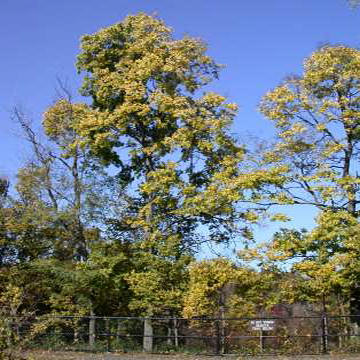

Celtis occidentalis - (image 1 of 6)
Taxonomy
Family: Ulmaceae
Habitat
Moist woods, often in the floodplains of streams. Also on much higher ground in drier soils.
Associates
Acer saccharum, Ambrosia trifida, Campanula americana, Carya cordiformis, Crytotoaenia canadensis, Elymus virginicus, Eupatorium rugosum, Fraxinus americana, Galium aparine, Geum canadense, Juglans nigra, Osmorhiza claytonii, Parthenocissus quinquefolia, Rhus radicans, Ribes missouriense, Sambucus canadensis, Sanicula gregaria, Smilacina racemosa, Ulmus americana, Viola sororia, Vitis riparia.
Distribution
Southern Quebec west to southern Manitoba, south to VA, AR, and OK; locally to NC, GA, AL, and MS.
Morphology
Deciduous tree to 35 m. Leaves asymmetrical, simple, alternate, deltoid-ovate, acuminate, widest near the base, serrate. Leaf blades with fewer than ten pairs of lateral veins. Bark with corky projection giving it a warty appearance. Flowers small, green, polygamo-monoecious. Fruit a fleshy, red-purple drupe, ripening in early fall.
Notes
Flowers April to May with emerging leaves
Wetland indicator: Facultative -
The shape of older trees similar to American Elm. Does well on dry soil in windy conditions but is also able to stand inundation with water for long periods of time. Leaves usually develop nipple-gall by late summer, which can be helpful with ID. A mite (Eriophyes sp.) causes "witches broom" on many trees. Host plant of the morning-cloak butterfly. Fall color can range from pale green to a good yellow. The outer covering of the seed is thin, dry, and very sweet.
References
Dirr, Michael A. 1998. Manual of Woody Landscape Plants:
Their Identification, Ornamental Characteristics, Culture, Propagation and Uses.
5th ed. Champaign, Illiois: Stipes Publishing L.L.C.
Swink, F. and G. Wilhelm. 1994. Plants of the Chicago Region.
Indiana Academy of Science. The Morton Arboretum. Lisle, Illinois.
|
Michael Hough © 2004 |